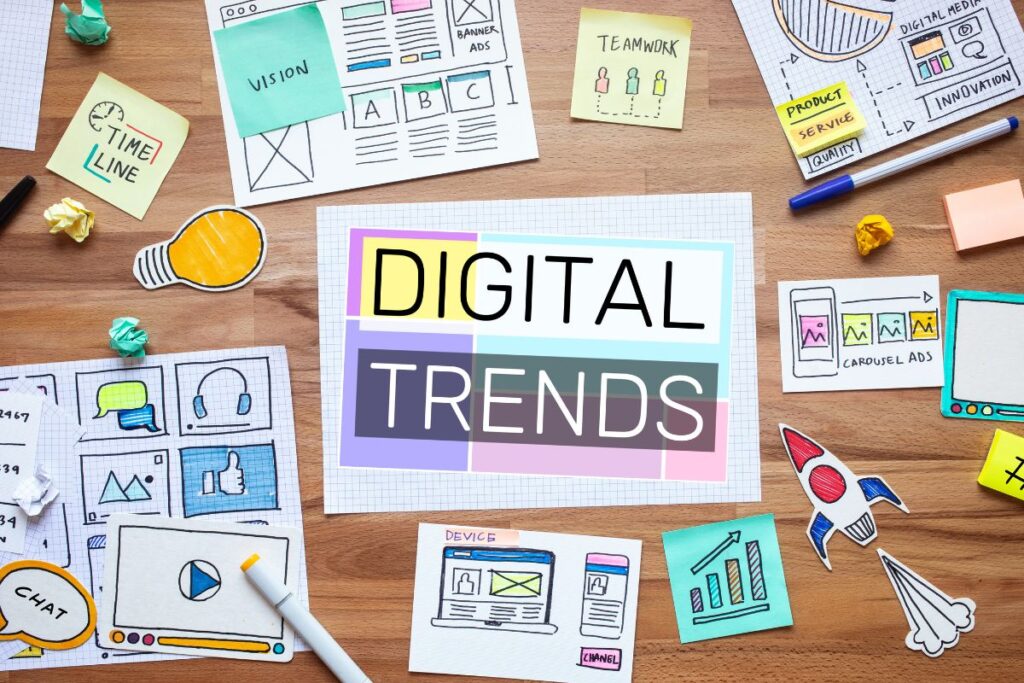Accounting Software Comparison: Choosing the Right Solution for Your Business

Choosing the best accounting software is a critical decision for any business. With so many options available, it can be overwhelming to determine which one will meet your company’s unique needs. In this comprehensive comparison, we evaluate the top accounting software solutions to help you make an informed choice. Key Features to Consider in Accounting Software When selecting an accounting platform, consider the following key features: Top Accounting Software Solutions Compared 1. QuickBooks Online Best for: Small to mid-sized businesses Key Features: Pros: Cons: 2. Xero Best for: Growing businesses and freelancers Key Features: Pros: Cons: 3. FreshBooks Best for: Freelancers and small service-based businesses Key Features: Pros: Cons: 4. Zoho Books Best for: Small and mid-sized enterprises (SMEs) Key Features: Pros: Cons: 5. Wave Best for: Startups and small businesses Key Features: Pros: Cons: Pricing Comparison Software Pricing (Monthly) Free Trial Available Best For QuickBooks Starting from $30 Yes Small to Mid-sized Businesses Xero Starting from $29 Yes Growing Businesses FreshBooks Starting from $19 Yes Freelancers & Service-Based Businesses Zoho Books Starting from $15 Yes SMEs Wave Free No Startups Choosing the Right Software for Your Business To find the best accounting software for your business, follow these steps: Read More: Best CRM Software for Small Business: 10 Powerful Solutions for Growth Conclusion Selecting the right accounting software can significantly streamline your financial management. Platforms like QuickBooks Online, Xero, FreshBooks, Zoho Books, and Wave offer robust solutions for businesses of all sizes. Evaluate your requirements, budget, and feature preferences to make the best choice. For more insights, follow The Business Tycoon
Best CRM Software for Small Business: 10 Powerful Solutions for Growth

Customer Relationship Management (CRM) software is a vital tool for small businesses looking to build stronger relationships with their customers, automate routine tasks, and enhance their sales performance. Choosing the right CRM can transform your business operations and accelerate growth. CRM systems store customer information, track interactions, and manage sales pipelines. By leveraging CRM software, small businesses can provide personalized experiences, boost productivity, and make data-driven decisions. Why Small Businesses Need CRM Software Features to Look for in CRM Software When selecting CRM software, consider the following features: Top 10 Best CRM Software for Small Business Here are the most effective CRM solutions tailored for small businesses: 1. HubSpot CRM 2. Zoho CRM 3. Salesforce Essentials 4. Pipedrive 5. Freshsales 6. Monday.com CRM 7. Insightly 8. Nimble 9. Keap (formerly Infusionsoft) 10. Capsule CRM How to Choose the Best CRM Software for Your Small Business Selecting the right CRM software for your small business involves evaluating your specific needs and business goals. Follow these steps to make an informed choice: 1. Identify Your Needs 2. Set a Budget 3. Evaluate Features 4. Check Integration Capabilities 5. Test with Free Trials 6. Consider Customer Support CRM Implementation Tips for Small Businesses Once you select your CRM software, follow these steps to ensure a smooth implementation: 1. Train Your Team 2. Import Data Carefully 3. Customize for Your Needs 4. Automate Repetitive Tasks 5. Monitor and Adjust Conclusion Investing in the right CRM software can transform how small businesses manage customer relationships, streamline operations, and drive growth. Evaluate your business needs, set a budget, and choose a CRM that aligns with your goals. Options like HubSpot CRM for ease of use, Zoho CRM for customization, or Salesforce Essentials for scalability ensure that businesses of all sizes can find a suitable solution. By leveraging CRM features like sales automation, data-driven insights, and marketing integration, small businesses can enhance customer satisfaction and achieve long-term success. Start your CRM journey today and experience the benefits of organized, efficient customer relationship management. For more insights, follow The Business Tycoon
Brand Storytelling Strategies: The Ultimate Guide to Captivating Your Audience

What Is Brand Storytelling and Why Is It Important? Brand storytelling is more than just a marketing strategy—it is the foundation of how businesses connect with their audience. A powerful brand story establishes trust, creates emotional connections, and differentiates a company from its competitors. In a crowded marketplace, brands that tell compelling and authentic stories stand out and build long-lasting relationships with their customers. The Core Elements of Effective Brand Storytelling Strategies For a brand story to be truly impactful, it must contain several key elements: 1. A Clear Brand Mission and Values A brand story should be rooted in a company’s mission and core values. Consumers today are more likely to support brands that share their beliefs and stand for something meaningful. 2. A Relatable Protagonist Whether it’s the founder, employees, or customers, a strong brand story often features a protagonist that people can relate to. This helps humanize the brand and makes the story more engaging. 3. An Emotional Connection The most successful brand stories evoke emotions. Whether it’s joy, nostalgia, empathy, or inspiration, an emotional response makes the story memorable and impactful. 4. A Conflict and Resolution Every great story involves a challenge or problem that needs to be solved. Brands that share how they overcame obstacles and delivered solutions create compelling narratives that resonate with their audience. 5. Consistency Across All Platforms Brand storytelling should be integrated into all marketing efforts, from websites and social media to advertisements and email campaigns. A consistent narrative reinforces the brand identity and strengthens customer relationships. Best Brand Storytelling Strategies for Maximum Impact 1. Define Your Brand Persona and Voice Your brand’s tone, voice, and personality should be clearly defined and consistent across all content. A luxury brand may adopt a sophisticated and elegant tone, while a youthful brand might use a casual and playful approach. 2. Use Customer-Centric Narratives Instead of making the story all about the brand, shift the focus to the customer’s journey. Showcase real customer experiences, testimonials, and case studies to highlight how your brand has positively impacted their lives. 3. Leverage Visual Storytelling A picture is worth a thousand words, and video storytelling can be even more powerful. Utilize high-quality images, behind-the-scenes footage, and video testimonials to enhance your brand story. 4. Utilize Social Media for Real-Time Engagement Social media platforms offer an excellent opportunity to tell your brand story in an interactive way. Share behind-the-scenes moments, live Q&A sessions, and user-generated content to create an engaging narrative. 5. Incorporate Storytelling into Your Content Marketing Strategy From blog posts and podcasts to email newsletters and ebooks, brand storytelling should be a key component of your content strategy. Compelling stories keep readers engaged and encourage them to take action. 6. Highlight Your Origin Story Consumers love hearing about how a brand was founded. Share your company’s journey, the struggles faced, and the passion that led to its success. An authentic origin story fosters trust and credibility. 7. Align Your Story with Current Trends and Social Causes People are drawn to brands that stand for something beyond just making a profit. Aligning your brand story with social responsibility, sustainability, or diversity efforts can make a lasting impact on your audience. 8. Build an Emotional Connection Through Storytelling Your brand’s story should evoke emotions that resonate with your target audience. This could be inspiration, nostalgia, hope, or empowerment. The deeper the emotional connection, the stronger the brand loyalty. 9. Use Data and Insights to Refine Your Story Analyze customer feedback, engagement metrics, and conversion data to see how your brand story is being received. Use this information to refine and optimize your storytelling approach. 10. Engage Employees as Brand Ambassadors Your employees play a crucial role in brand storytelling. Encourage them to share their personal experiences with the brand and showcase their stories on social media and company blogs. Examples of Brands That Excel in Storytelling Apple: Innovation and Simplicity Apple’s brand storytelling revolves around innovation, simplicity, and customer empowerment. From product launches to advertisements, Apple consistently tells a story of pushing boundaries and changing the world through technology. Nike: Inspiring and Motivational Stories Nike’s “Just Do It” campaign is a prime example of powerful storytelling. By featuring real athletes and their struggles, Nike creates motivational and relatable narratives that inspire people to achieve greatness. Coca-Cola: Emotion-Driven Storytelling Coca-Cola’s marketing is centered around happiness, friendship, and togetherness. Their holiday campaigns and “Share a Coke” initiative are perfect examples of how emotional storytelling builds a strong brand connection. How to Implement Brand Storytelling in Your Business 1. Identify Your Unique Selling Proposition (USP) Understand what sets your brand apart from competitors and build your story around that unique element. 2. Develop a Brand Story Framework Structure your story with a clear beginning (origin and mission), middle (challenges and solutions), and end (impact and future vision). 3. Create a Content Calendar for Storytelling Consistency is key. Plan out how and when you will share different parts of your brand story across various platforms. 4. Encourage User-Generated Content Customers sharing their own experiences with your brand adds authenticity and credibility to your story. 5. Measure Performance and Adapt Your Storytelling Approach Track engagement, conversions, and brand sentiment to see how well your storytelling efforts are working and adjust accordingly. Conclusion Brand storytelling strategies for building a strong, authentic, and emotional connection with your audience. By crafting engaging, relatable, and consistent narratives, brands can enhance customer loyalty, differentiate themselves in the market, and drive long-term success. For more insights, follow The Business Tycoon
Machine Learning Business Applications: How AI Transforms Decision-Making and Efficiency

Machine learning (ML) is revolutionizing the way businesses operate. From enhancing decision-making to improving efficiency, businesses of all sizes are leveraging ML to stay competitive. But what exactly is machine learning, and how does it impact businesses? Let’s dive in. How Machine Learning Transforms Businesses Enhancing Decision-Making Machine learning helps businesses make data-driven decisions by analyzing large datasets and identifying trends. This allows companies to predict customer behavior, optimize operations, and allocate resources effectively. Improving Efficiency and Productivity With ML, businesses can automate repetitive tasks, optimize workflows, and enhance operational efficiency. Whether it’s chatbots handling customer inquiries or automated financial reporting, ML saves time and resources. Reducing Costs By streamlining processes and improving accuracy, ML helps businesses cut costs. Predictive maintenance in manufacturing, fraud detection in finance, and automated marketing campaigns are just a few examples. Key Machine Learning Applications in Business Customer Experience Enhancement Personalized Recommendations E-commerce giants like Amazon and Netflix use ML to provide personalized recommendations, enhancing user experience and increasing sales. Chatbots and Virtual Assistants AI-powered chatbots improve customer support by providing instant responses, reducing wait times, and enhancing customer satisfaction. Marketing and Sales Optimization Predictive Analytics Businesses use ML to analyze customer behavior and predict future sales trends, allowing for targeted marketing campaigns. Customer Segmentation ML algorithms segment customers based on behavior and preferences, enabling businesses to offer tailored products and services. Fraud Detection and Cybersecurity Identifying Anomalies Banks and financial institutions use ML to detect fraudulent transactions by identifying unusual patterns in spending behavior. Strengthening Security Measures ML enhances cybersecurity by detecting potential threats, monitoring network activity, and preventing cyber-attacks. Supply Chain and Inventory Management Demand Forecasting ML predicts demand based on historical data, helping businesses optimize inventory levels and avoid stockouts or overstocking. Automated Warehousing Robots powered by ML streamline warehouse operations, reducing errors and increasing efficiency. Human Resources and Talent Management Resume Screening and Candidate Matching ML-powered systems scan resumes and match candidates to job requirements, speeding up the hiring process. Employee Retention Analysis Companies use ML to predict employee turnover and implement retention strategies accordingly. Financial Forecasting and Risk Management Market Trends Prediction Financial firms leverage ML to analyze market trends and make informed investment decisions. Credit Scoring and Risk Assessment Banks use ML to assess creditworthiness, reducing the risk of loan defaults. Healthcare and Pharmaceuticals Disease Diagnosis and Treatment Plans ML assists doctors in diagnosing diseases and recommending personalized treatment plans based on patient data. Drug Discovery and Development Pharmaceutical companies use ML to accelerate drug discovery, reducing research and development costs. Challenges of Implementing Machine Learning in Business Data Privacy Concerns Handling large volumes of data raises privacy issues. Companies must comply with regulations to protect customer data. Need for Skilled Professionals ML implementation requires expertise in data science, which can be a barrier for many businesses. Integration with Existing Systems Many businesses struggle to integrate ML with legacy systems, requiring significant investment in infrastructure. The Future of Machine Learning in Business AI-Powered Automation As ML advances, more tasks will be automated, leading to increased efficiency and innovation. Evolution of Ethical AI Businesses will need to focus on ethical AI to ensure fairness, transparency, and unbiased decision-making. Industry-Specific Innovations ML will continue to evolve, offering industry-specific solutions in healthcare, finance, retail, and beyond. Conclusion Machine learning is transforming businesses across industries. From customer service to risk management, its applications are endless. While challenges exist, the benefits far outweigh them. Companies that embrace ML will stay ahead in the competitive market. FAQs 1. How can small businesses leverage machine learning?Small businesses can use ML for customer segmentation, marketing automation, and fraud detection with cost-effective cloud-based tools. 2. What are the most common challenges in adopting machine learning?Data privacy, lack of skilled professionals, and integration with existing systems are the main challenges businesses face. 3. How does machine learning improve decision-making in business?ML analyzes vast amounts of data, providing insights that help businesses make informed and strategic decisions. 4. Is machine learning expensive to implement?While ML can be costly, cloud-based solutions and open-source tools make it accessible to businesses of all sizes. 5. What industries benefit the most from machine learning?Industries like healthcare, finance, retail, and manufacturing benefit the most due to ML’s ability to optimize operations and decision-making. For more insights, follow The Business Tycoon
Digital Marketing Trends 2025: Embracing the Future of Online Engagement

In today’s fast-evolving digital landscape, we continuously strive to push the boundaries of innovation and customer engagement. As we look forward to 2025, the realm of digital marketing is being reshaped by groundbreaking technologies and a profound shift in consumer behavior. In this comprehensive overview, we explore the most significant trends that are set to redefine the industry and empower brands to establish deeper, more meaningful connections with their audiences. Harnessing the Power of Artificial Intelligence and Machine Learning Artificial Intelligence (AI) and Machine Learning (ML) are at the forefront of digital transformation. We are leveraging these advanced technologies to analyze vast datasets, predict consumer behavior, and optimize marketing campaigns in real time. By harnessing AI-powered analytics, we can tailor messages with surgical precision, ensuring that every interaction is highly relevant and engaging. AI-driven tools such as chatbots and virtual assistants are now integral to customer service strategies. These intelligent systems provide instant support, address common queries, and enhance user experiences by delivering personalized recommendations. As AI continues to evolve, its role in streamlining operations and improving the effectiveness of digital marketing efforts becomes increasingly pivotal. Optimizing for Voice Search in a Connected World The surge in smart speakers and voice-activated devices is transforming the way consumers seek information online. Voice search optimization has become essential for reaching audiences who prefer natural, conversational interactions over traditional text-based queries. We are shifting our strategies to prioritize long-tail keywords and natural language patterns, ensuring that our content is both accessible and engaging across all voice-enabled platforms. Adapting to this change means rethinking content structure, implementing structured data, and enhancing local SEO efforts. By doing so, we can improve visibility in voice search results and capture a broader segment of the market, solidifying our position in an increasingly competitive digital ecosystem. The Dominance of Video Marketing and Interactive Experiences Video content remains a dominant force in digital marketing, offering an unparalleled medium for storytelling and brand engagement. We are capitalizing on the growing demand for dynamic video content by integrating live streaming, interactive video elements, and personalized video experiences into our strategies. Videos not only capture attention but also deliver complex messages in a compelling, easily digestible format. The rise of interactive content—such as polls, quizzes, and 360-degree video tours—allows us to engage audiences on a deeper level. These immersive experiences encourage active participation, providing valuable insights into consumer preferences and driving higher engagement rates. By blending high-quality video production with interactive elements, we create a richer and more compelling narrative that resonates with modern audiences. Prioritizing Data Privacy and Building Consumer Trust In an era marked by increasing concerns over data privacy, maintaining consumer trust is paramount. We are committed to upholding the highest standards of data protection and transparency, ensuring that every marketing initiative respects user privacy. Robust encryption methods, transparent privacy policies, and strict adherence to global regulatory standards are at the core of our approach. As consumers become more vigilant about their online privacy, brands that prioritize ethical data practices stand to gain a competitive advantage. We believe that a steadfast commitment to data privacy not only safeguards sensitive information but also fosters long-term loyalty and trust among our audience. Leveraging Influencer Marketing and Nurturing Micro-Communities The landscape of influencer marketing is evolving, with a marked shift towards micro and nano influencers who command highly engaged, niche audiences. We are aligning our strategies to harness the authentic voice of influencers who share our brand values and resonate with our target demographics. These influencers offer a unique blend of relatability and expertise, making them ideal partners in our quest to build trust and credibility. By nurturing micro-communities, we create opportunities for meaningful interactions and organic growth. Collaborating with influencers on authentic content not only expands our reach but also enhances our brand narrative in a way that is both genuine and impactful. This strategic focus on influencer marketing is a critical component of our broader digital strategy. Evolving Content Marketing with Deep Personalization Content remains the backbone of any successful digital marketing strategy. In 2025, we are embracing a new era of content marketing that prioritizes deep personalization and tailored experiences. By utilizing advanced analytics and consumer insights, we craft content that speaks directly to the unique interests and behaviors of our audience segments. This highly personalized approach spans a variety of formats, including long-form articles, whitepapers, webinars, and social media posts. Each piece of content is meticulously designed to deliver value at every stage of the customer journey, reinforcing our brand authority and driving sustained engagement. We believe that when content is personalized and relevant, it not only informs but also inspires action. Implementing a Mobile-First Strategy for Seamless Experiences With mobile devices dominating digital interactions, a mobile-first approach is no longer optional—it is essential. We are dedicated to ensuring that our digital assets are fully optimized for mobile experiences. From responsive website designs to fast-loading mobile applications, every element is crafted to provide seamless, on-the-go access to our content. Our mobile-first strategy emphasizes intuitive navigation, streamlined user interfaces, and engaging mobile-specific features. By prioritizing the mobile user experience, we guarantee that our content remains accessible and impactful, regardless of where or how it is accessed. This commitment to mobile optimization is crucial in capturing the attention of today’s fast-paced, mobile-centric audience. Championing Sustainability and Ethical Marketing Practices Sustainability and ethics have emerged as critical factors in shaping consumer choices. We are integrating sustainable practices into our digital marketing strategies, recognizing that environmental and social responsibility are key drivers of modern consumer behavior. From eco-friendly content production to transparent corporate social responsibility initiatives, our efforts are geared toward building a brand that stands for more than just profit. By promoting sustainability in our marketing practices, we not only contribute to a better future but also cultivate a loyal customer base that values ethical conduct. Our commitment to sustainability is reflected in every aspect of our operations, reinforcing our brand’s integrity and fostering a sense of shared responsibility among
Leadership Development Strategies: Unlocking Potential and Driving Success

Leadership development is more than just a buzzword—it’s a critical investment in the future of any organization. Whether you’re a seasoned executive or an emerging leader, developing effective leadership strategies can transform your career and drive your team toward success. In this article, we’ll explore the essence of leadership development strategies, examine various approaches, and discuss how you can integrate them into your personal growth plan and corporate culture. Introduction to Leadership Development Leadership development involves honing your ability to inspire, influence, and guide others. In today’s fast-paced business world, the demand for strong leadership is higher than ever. But what does leadership development entail, and why is it so crucial? What is Leadership Development? Leadership development is a systematic process of nurturing individuals’ abilities to lead. It equips people with the skills, knowledge, and confidence to navigate challenges and drive positive change. Why Leadership Development Matters Leaders are catalysts for innovation, teamwork, and success. Without effective leadership, even the most brilliant ideas can fail. Prioritizing leadership development not only enhances organizational performance but also fosters a culture of continuous improvement. The long-term benefits include increased employee engagement, higher profitability, and greater adaptability. Core Principles of Effective Leadership Development To build a Effective leadership development program, it’s essential to understand the core principles that define effective leadership. Self-Awareness and Emotional Intelligence Self-awareness helps leaders understand their strengths and areas for improvement, while emotional intelligence enables them to manage emotions and build strong relationships. Leaders with these qualities foster trust and create supportive work environments. Continuous Learning and a Growth Mindset A growth mindset encourages leaders to view challenges as opportunities. Continuous learning through experiences, feedback, and training ensures leaders stay adaptable and forward-thinking. Strategies to Enhance Leadership Skills Developing leadership skills involves adopting various strategies and leveraging available resources. Here are some of the most effective approaches: 1. Mentorship Programs and Coaching Mentorship is a powerful tool for leadership development. Mentors provide guidance, share experiences, and offer feedback. One-on-one coaching further enhances learning by tailoring support to individual needs. Benefits of Mentorship 2. Hands-On Experience and Role Rotation Experiential learning through hands-on experience is invaluable. Role rotation offers leaders exposure to different functions within an organization, providing a holistic perspective essential for strategic decision-making. 3. Formal Training and Workshops Structured programs, workshops, and conferences introduce new leadership concepts and frameworks. Online courses and webinars also provide flexible learning opportunities. Integrating Leadership Development into Corporate Culture For leadership development to be successful, it must become a core part of the corporate culture. Creating a Learning Environment Organizations can cultivate a learning culture by encouraging continuous education, promoting knowledge sharing, and rewarding innovation. Providing access to training resources and supporting career development initiatives further nurtures leadership growth. Encouraging Open Communication and Feedback A transparent feedback culture fosters trust and collaboration. Implementing regular feedback sessions, employee surveys, and mentorship discussions can help identify leadership potential and development areas. Overcoming Challenges in Leadership Development Implementing leadership development strategies can present challenges. Here’s how to address them effectively: Measuring the Success of Leadership Programs Evaluate leadership development initiatives using the following metrics: Future Trends in Leadership Development As organizations evolve, leadership development strategies are also transforming. Staying ahead of emerging trends can enhance leadership effectiveness. Embracing Technology and Virtual Learning Virtual classrooms, webinars, and interactive simulations provide flexible and personalized learning experiences. AI-powered learning platforms offer tailored development paths. Prioritizing Diversity and Inclusion Diverse leadership teams drive innovation and problem-solving. Leadership development programs should emphasize cultural competence, ensuring leaders are equipped to manage inclusive teams effectively. Conclusion and Key Takeaways Leadership development is a continuous journey that empowers individuals to unlock their potential and drive organizational success. By fostering self-awareness, embracing continuous learning, and implementing structured programs like mentorship and role rotation, leaders can thrive. Organizations that embed leadership development into their culture will see long-term benefits, including increased employee engagement, innovation, and profitability. Start your leadership development journey today by evaluating your strengths, seeking mentorship, and embracing growth opportunities. Frequently Asked Questions (FAQs) 1. What is the most important quality for a leader to develop? Self-awareness and emotional intelligence are critical for understanding strengths and building effective relationships. 2. How can small businesses implement leadership development strategies without a large budget? Small businesses can utilize online courses, peer coaching, and mentorship programs. Promoting a culture of learning and feedback also supports leadership growth. 3. What role does technology play in modern leadership development? Technology facilitates virtual learning, provides personalized development paths, and offers interactive experiences through simulations and collaborative platforms. 4. How can organizations measure the success of their leadership development programs? Organizations can track employee feedback, performance improvements, career progression, and ROI to evaluate program effectiveness. 5. Why is diversity important in leadership development? Diverse perspectives drive innovation and enhance decision-making. Inclusive leadership programs prepare leaders to manage diverse teams effectively. Leadership development isn’t a destination—it’s a lifelong journey. By taking intentional steps toward growth, you can unlock your leadership potential and contribute to your organization’s success. For more insights, follow The Business Tycoon
Corporate Disruption Strategies: Charting a New Course for Business Excellence

In today’s rapidly evolving business landscape, corporate disruption strategies have become the cornerstone of sustainable growth and long-term competitiveness. Disruption is not solely about overcoming challenges; it is about seizing opportunities to redefine markets, revitalize internal processes, and drive transformative change. Our approach is rooted in a deep understanding of market dynamics and an unwavering commitment to innovation, ensuring that our strategies not only withstand the test of time but also set new industry benchmarks. Understanding Corporate Disruption in the Modern Business Landscape Defining Corporate Disruption At its core, corporate disruption signifies a paradigm shift in the way businesses operate. Disruption often stems from external forces such as technological breakthroughs, shifting consumer expectations, and evolving competitive pressures. Embracing Disruption as an Opportunity We recognize that successful companies adapt swiftly and decisively to changes. By treating disruption as a proactive catalyst for growth rather than a reactive response, businesses can unlock new opportunities for innovation and market leadership. Embracing Agile Transformation as a Catalyst for Change Implementing Agile Methodologies Agile transformation is at the heart of our disruption strategies. By applying agile methodologies across all levels of our organization, we create a dynamic structure capable of rapidly responding to market shifts. Key Pillars of Agile Transformation Leveraging Technological Innovation to Drive Disruption Embracing Emerging Technologies Technological innovation plays an indispensable role in corporate disruption. Investments in artificial intelligence, machine learning, blockchain, and the Internet of Things (IoT) enable us to optimize operational capabilities and deliver exceptional value. Data-Driven Insights By harnessing data analytics and predictive modeling, we gain invaluable insights into customer preferences and market trends, driving informed decision-making across product development, marketing strategies, and operations. Strategic Leadership and Adaptive Management in Times of Disruption The Role of Strategic Leadership In a dynamic business environment, effective leadership is essential. Our leadership team fosters a culture of transparency, accountability, and innovation. Building Resilient Teams We invest in leadership development programs that empower managers to view disruption as an opportunity. This adaptive mindset ensures teams remain agile and responsive, even in the face of uncertainty. Digital Transformation and Integration: A Cornerstone of Corporate Evolution Integrating Digital Technologies Digital transformation is not just an option; it is imperative for sustainable growth. We integrate digital technologies at every operational level to enhance customer experiences, streamline supply chain management, and boost efficiency. Real-Time Decision-Making With cloud computing, big data, and advanced analytics, we create interconnected systems that support real-time decision-making, ensuring agility in response to market fluctuations. Building Organizational Resilience and Future-Ready Strategies Proactive Risk Management We conduct regular scenario planning exercises to identify potential threats and devise contingency plans, ensuring resilience in the face of disruption. Diversified Revenue Streams By maintaining a diversified portfolio, we mitigate the risks of over-reliance on any single market or revenue source, providing the flexibility to pivot when necessary. Data-Driven Decision Making and Continuous Innovation Advanced Data Management We have established sophisticated data management systems that consolidate information from multiple sources, providing a 360-degree view of our operations and market conditions. Commitment to Continuous Innovation Our focus on research and development, driven by data analytics, allows us to test new ideas, refine strategies, and achieve breakthrough innovations. Cultivating a Culture of Innovation and Disruption Encouraging Creativity and Experimentation A culture of innovation is central to our disruption strategy. By fostering an environment where bold ideas are celebrated, we empower teams to challenge the status quo. Collaborative Innovation We collaborate with academic institutions, technology startups, and industry leaders to accelerate innovation cycles and stay at the forefront of technological advancements. Strategic Partnerships and Ecosystem Collaboration Forming Strategic Alliances Navigating the complexities of modern disruption requires collaboration. We build strategic partnerships with industry leaders and technology innovators to enhance our capabilities and extend market reach. Industry Consortia and Innovation Hubs By participating in cross-sector initiatives, we access valuable insights and best practices, driving holistic change and accelerated innovation. Sustainable Growth Through Disruption: A Forward-Looking Perspective Balancing Immediate and Long-Term Goals Our growth strategy balances short-term operational improvements with long-term investments in disruptive technologies. Financial Management and Strategic Investment Through prudent financial management and targeted innovation investments, we ensure resilient and sustainable growth. Conclusion: Navigating the Future with Confidence and Purpose Our approach to corporate disruption strategies is a blend of agility, innovation, and strategic foresight. By embracing change, investing in technology, and fostering a culture of continuous improvement, we position ourselves as leaders in a rapidly evolving market. Through strategic leadership, adaptive management, and collaborative partnerships, we navigate disruption with confidence and purpose. Our commitment to business excellence ensures long-term success in the face of any challenge. For more insights, follow The Business Tycoon
Digital Workplace Transformation: Driving Innovation and Efficiency

In today’s rapidly evolving business landscape, a digitally integrated workplace is essential for maintaining competitive advantage and operational excellence. We have harnessed advanced technologies and strategic methodologies to redefine digital workplace transformation dynamics, ensuring enhanced productivity, seamless collaboration, and robust security. The Evolution of the Digital Workplace Defining the Digital Workplace A digital workplace is a comprehensive ecosystem where employees, digital tools, and organizational processes merge. This environment leverages cloud technologies, automation, and advanced analytics to streamline operations, foster collaboration, and enable a responsive, agile work culture. Key Drivers of Transformation Comprehensive Benefits of a Modern Digital Workplace Enhanced Productivity and Operational Efficiency By automating routine tasks and providing real-time data insights, digital workplaces reduce operational bottlenecks. This transformation leads to faster decision-making, streamlined workflows, and ultimately, a significant boost in overall productivity. Improved Collaboration and Communication Advanced digital tools enable seamless interactions across departments and geographies. Unified communication platforms, virtual meeting spaces, and collaborative software foster a connected environment that transcends physical boundaries. Scalability and Agility A modern digital workplace provides the agility required to quickly adapt to market shifts and scale operations. By embracing flexible digital solutions, organizations can efficiently manage growth and navigate evolving business challenges. Employee Engagement and Experience Investing in digital transformation creates an engaging work culture. Employees benefit from access to innovative tools, continuous learning opportunities, and enhanced work-life balance, driving long-term retention and satisfaction. Our Strategic Approach to Digital Workplace Transformation Comprehensive Assessment and Vision Alignment We begin by conducting a meticulous evaluation of current processes, technological assets, and employee needs. This assessment is crucial in aligning our digital strategy with the organization’s core vision and strategic goals, ensuring a tailored roadmap for transformation. Robust Technology Integration and Innovation Our methodology centers on integrating state-of-the-art digital solutions that harmonize with existing systems. By leveraging cloud platforms, AI-driven analytics, and automation tools, we create an ecosystem that drives efficiency and innovation at every level. Culture and Change Management Successful transformation extends beyond technology. We prioritize change management by engaging stakeholders, delivering targeted training programs, and fostering an adaptive culture. This approach ensures smooth transitions and maximizes employee buy-in. Security and Compliance in a Digital Ecosystem We implement stringent cybersecurity measures and adhere to global compliance standards. By safeguarding data and ensuring robust privacy protocols, we create a secure digital environment that builds trust and protects organizational integrity. Implementation Roadmap for Digital Workplace Transformation Phase 1: Assessment and Strategic Planning We conduct an in-depth analysis of workflows, technology infrastructure, and employee insights. This phase establishes clear objectives and sets the foundation for a successful transformation journey. Phase 2: Design and Technology Integration Customized digital strategies are developed, focusing on integrating collaborative platforms, automation tools, and cloud-based systems. Tailored workflows are designed to optimize efficiency and support scalability. Phase 3: Rollout and Employee Adoption Our rollout strategy emphasizes comprehensive training and continuous support. We ensure that employees are equipped with the skills and resources needed to adapt to new digital tools, fostering a culture of proactive adoption. Phase 4: Continuous Improvement and Innovation Digital transformation is an ongoing process. We regularly review performance metrics and solicit feedback to identify areas for refinement. This commitment to continuous improvement drives sustainable innovation and operational excellence. Future Trends in Digital Workplace Transformation Emerging Technologies and Their Impact Innovations such as augmented reality, virtual collaboration environments, and blockchain-based security solutions are set to further enhance workplace efficiency. These technologies will redefine employee engagement and streamline complex processes. Adaptive Work Models The shift towards remote and hybrid work models is accelerating. Our digital workplace strategy is designed to support these adaptive models by providing flexible, secure, and efficient digital solutions that cater to diverse work environments. Data-Driven Decision Making Leveraging big data and AI, our digital workplace empowers leadership with real-time insights. This data-driven approach enables proactive decision-making, ensuring that organizations remain agile and competitive in a fast-paced market. Conclusion We are committed to transforming the digital workplace by integrating advanced technologies, fostering a culture of continuous innovation, and prioritizing security and compliance. Our comprehensive approach ensures enhanced productivity, seamless collaboration, and sustainable growth. Embrace the future of work with us and experience the transformative benefits of a truly digital workplace. For more insights, follow The Business Tycoon
Corporate Innovation Best Practices: Pioneering Change in a Competitive Landscape

In today’s rapidly evolving business environment, corporate innovation has become not just a buzzword but a critical driver for growth and sustainability. We are at the forefront of redefining how organizations transform ideas into groundbreaking products, processes, and services. Our approach embraces strategic insights, technological advancements, and a culture that fosters creativity and resilience. Understanding the Landscape of Corporate Innovation Corporate innovation is a multifaceted discipline that requires a deep understanding of market dynamics, consumer behavior, and emerging technologies. We believe that every organization has the potential to reinvent itself by integrating innovation into its core operations. The modern marketplace demands agility, and innovation best practices are essential in creating value and maintaining a competitive edge. Innovation involves more than just brainstorming sessions; it is about creating an ecosystem where every stakeholder feels empowered to contribute. Our methodology centers on the idea that robust corporate innovation is the result of continuous learning, proactive adaptation, and strategic risk-taking. We focus on: Embracing a Culture of Innovation A thriving innovation culture is built on the foundation of trust, open communication, and a shared vision. We emphasize the importance of establishing an environment where experimentation is encouraged, and failure is seen as a stepping stone to success. Here are the key elements that shape our innovation culture: Strategic Framework for Innovation Implementation To transform innovation from a concept into actionable outcomes, a strategic framework is essential. We deploy a structured process that includes ideation, incubation, and execution phases, each tailored to meet the specific needs of our organization. Our framework comprises: 1. Ideation and Conceptualization 2. Incubation and Prototyping 3. Execution and Scaling Harnessing Technology and Digital Transformation Technology is the backbone of modern corporate innovation. In an era where digital transformation is reshaping every industry, we harness cutting-edge technologies to stay ahead of the curve. Our digital strategy is centered on: Fostering Collaboration and Cross-Functional Teams The complexity of today’s business challenges necessitates collaboration across various disciplines. We have built a collaborative ecosystem that brings together professionals from different backgrounds to drive innovation. Key practices include: Measuring Innovation Success and ROI A critical component of our innovation strategy is the ability to measure its success accurately. We employ a variety of metrics to assess the impact of our initiatives and ensure a positive return on investment (ROI). Our measurement framework includes: Regular review sessions and detailed analytics allow us to refine our strategies continuously, ensuring that every investment in innovation delivers measurable value. Sustaining Long-Term Innovation Efforts Sustaining innovation is a long-term commitment that requires perseverance and adaptability. We have developed strategies to ensure that innovation remains a permanent fixture in our corporate DNA: Overcoming Challenges in Corporate Innovation Every innovation journey comes with its own set of challenges. We recognize that obstacles such as resistance to change, resource constraints, and market uncertainties can impede progress. To address these challenges, we have implemented the following strategies: The Future of Corporate Innovation Looking ahead, the future of corporate innovation is bright and filled with opportunities. We are excited to explore new frontiers in digital transformation, sustainability, and customer engagement. As we continue to evolve, our commitment to innovation remains unwavering. We are dedicated to creating environments where creativity thrives and groundbreaking ideas become reality. In summary, our approach to corporate innovation best practices is comprehensive and future-focused. By fostering a culture of creativity, leveraging cutting-edge technologies, and implementing a robust strategic framework, we are well-equipped to navigate the complexities of today’s business environment. Our continuous investment in innovation not only drives competitive advantage but also positions us as leaders in our industry. For more insights, follow The Business Tycoon
15 Actionable Social Media Marketing Tips to Skyrocket Your Brand in 2024

Social media marketing is no longer optional—it’s essential. With 4.9 billion users worldwide, platforms like Instagram, Facebook, TikTok, and LinkedIn offer unparalleled opportunities to connect with audiences. However, standing out requires strategy. In this guide, we’ll share 15 actionable social media marketing tips to help you craft compelling campaigns, grow your audience, and achieve measurable results. 1. Define Clear Goals Before diving into tactics, outline your objectives. Are you aiming to increase brand awareness, drive website traffic, or boost sales? Aligning your social media marketing tips with SMART goals (Specific, Measurable, Achievable, Relevant, Time-bound) ensures every post serves a purpose. 2. Know Your Audience Inside Out Successful social media marketing hinges on understanding your audience. Use analytics tools to identify demographics, interests, and pain points. For example, Gen Z thrives on TikTok, while professionals engage more on LinkedIn. Tailor your social media marketing strategy to resonate with their preferences. 3. Choose the Right Platforms Not every platform will suit your brand. Focus on channels where your audience is most active: 4. Optimize Profiles for SEO Incorporate keywords into your bios, headlines, and descriptions. For instance, a bakery might use “Artisan Sourdough Bread | Fresh Daily” instead of generic terms. This boosts discoverability—a critical social media marketing tip for local businesses. 5. Create High-Quality Content Consistently Quality trumps quantity. Share posts that educate, entertain, or inspire: 6. Leverage Short-Form Video Short-form video dominates social algorithms. Platforms like Instagram Reels and TikTok prioritize bite-sized, engaging clips. Try: 7. Engage Authentically Social media is a two-way conversation. Respond to comments, DMs, and reviews promptly. Ask questions in captions (e.g., “What’s your favorite summer flavor?”) to spark discussions. Authentic engagement is among the most underrated social media marketing tips. 8. Use Hashtags Strategically Hashtags expand your reach but require precision: Also Read: Best Marketing Strategies to Skyrocket Your Business in 2025 9. Collaborate with Influencers Partner with micro-influencers (10k–100k followers) for authentic endorsements. For example, a skincare brand could collaborate with a dermatologist for credibility. Ensure their audience aligns with yours—this social media marketing tip drives trust and conversions. 10. Run Targeted Ads Paid ads amplify your organic efforts. Use platform-specific tools like Facebook Ads Manager or TikTok Promote to: 11. Monitor Analytics Religiously Track metrics like engagement rate, click-throughs, and follower growth. Tools like Google Analytics, Hootsuite, or native platform insights reveal what’s working. Adjust your social media marketing strategy based on data, not guesswork. 12. Experiment with New Features Platforms reward early adopters. Test features like: 13. Repurpose Content Across Channels Maximize ROI by repurposing content: 14. Prioritize Community Building Create Facebook Groups or LinkedIn Communities to foster loyalty. Host live Q&As, exclusive giveaways, or member-only discounts. A strong community is a goldmine for social media marketing success. 15. Stay Updated on Trends Social media evolves rapidly. Follow industry leaders, subscribe to newsletters, and attend webinars. In 2024, AI-driven content, shoppable posts, and ephemeral content (e.g., Stories) are rising stars. Common Social Media Marketing Mistakes to Avoid Conclusion Mastering social media marketing takes time, but these 15 social media marketing tips provide a roadmap to success. Focus on authenticity, adaptability, and data-driven decisions to build meaningful connections and grow your brand. Start implementing these strategies today—your audience is waiting! For more insights, follow The Business Tycoon
